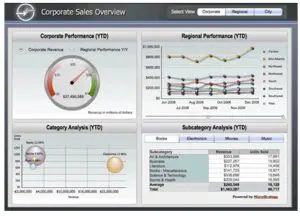“Everybody’s got a plan – until they are punched in the face,” stated boxer Mike Tyson. My experience personally reviewing over three hundred executive summaries each year, all sent to me unsolicited, seems to bear out the truth in Tyson’s statement. Anyone can build a good – or great – plan. Investors have to look behind the plan and at the entrepreneur and his or her team, knowing that, over time, most of us have come to the conclusion that it is the execution of the ever-changing plan, not the plan itself that makes a company a success.
Tyson’s statement also addresses change. The ‘punch in the face’ is analogous to dealing with the business plan when it intersects with the realities of the market. Wham! I can’t recall any of my companies hanging onto its original plan after some level of consumer feedback.
We built one of our companies upon forecasted metrics for a specific class of retail consumer base, but found that there wasn’t enough money in our universe to pay for marketing to create that much dedicated traffic to our site. So we switched to distribution through partners which already had  massive amounts of traffic, and concentrated in providing great content and great offers that more than made up for the sharing of revenues.
massive amounts of traffic, and concentrated in providing great content and great offers that more than made up for the sharing of revenues.
[Email readers, continue here…] There is a name for such a change in focus, in this case from retail to wholesale. We call it a “pivot,” a term now used to describe great management dealing with successfully refocusing a company in a new direction.
And most of us who invest in so many companies have come to the conclusion that our greatest profits over time come from investments in great management, groups that we are confident are able to execute even on average plans. Some label this as “Bet on the jockey, not the horse.”









The remark about plans versus execution brings to mind Lotus 1-2-3. There was no large formal business plan, but there was a plan. Hit the IBM PC market with all you’ve got and swamp those dabbling in that market. As always, execution was key. I knew Jon Sachs who wrote the software and even visited him while he was writing it. He was a talented assembly language programmer, but others could have done his job as well. Without great execution on the marketing side, 1-2-3 could have been just another attempt to enter the PC market.
My own business had great success in getting on the NYC purchasing system, a feat that many large companies failed at. Then, we set about selling there. We built up to a decent number of schools and decent revenue but could not really get past about 10% market penetration, and that dropped when NYCDOE changed their purchasing practices. So, we hired a local sales company. We no longer get 100% of our revenue, but our sales are much larger and will grow to 40-50% of the market. Also, we are now able to sell to elementary schools, something we could not even consider before. Our potential market size has expanded by 25% because of this.
As a result of that experience, we’re looking for other sales partners who already have the know-how in specific geographical areas.
Execute your plan efficiently and be ready to change it if the market tells you to. Sounds simple but the extreme noise of managing a start-up can mask those signals. You must pay attention to everything around you and notice anomalies.